Tag: art history
Library Orientation for Art Practice and Art History Students
Welcome back students! If you are interested in learning more about the wonderful library arts resources, please join us at one of our upcoming library orientation sessions. Current sessions offered include:
Tuesday, September 5th 1-2
Tuesday, September 5th 4-5
Friday, September 8th 12-1
Friday, September 8th 3-4
Please rsvp at: http://ucblib.link/orientationAHC
Registration will be capped at 20 students per session. New dates/times will be added to the rsvp form if the current offerings reach capacity. We will meet in the Art History/Classics Library (room 308, 3rd floor Doe Library).
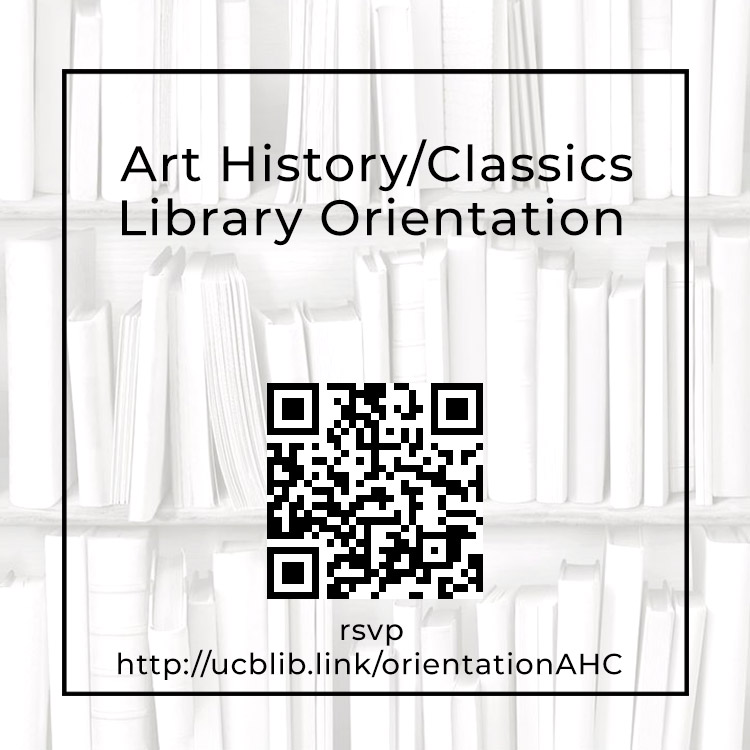
Senga Nengudi: Black Avant-Garde Visual and Performance Artist
As a continuation of our work for the Getty Research Institute’s African American Art History Initiative (AAAHI), Dr. Bridget Cooks and I conducted several oral history interviews with the avant-garde artist Senga Nengudi. This interview is one of several AAAHI oral histories exploring the lives and work of Los Angeles-based artists, and highlights Nengudi’s contributions to visual and performance art.
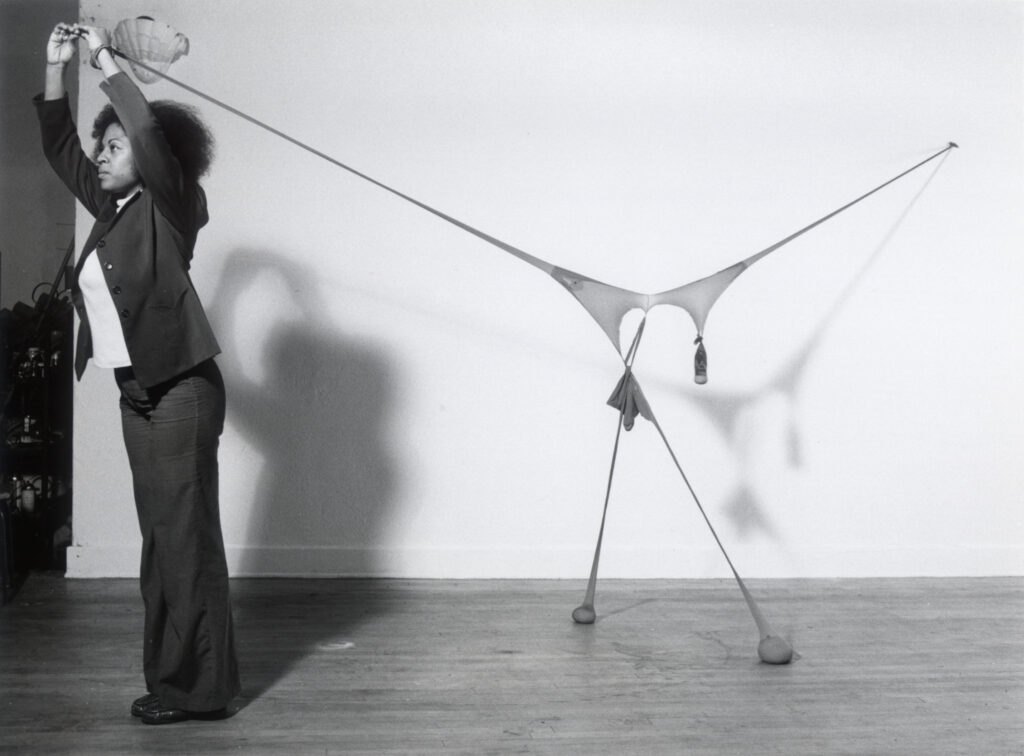
Senga Nengudi is an avant-garde artist best known for her abstract sculpture and performance art. Nengudi was born in Chicago, Illinois, in 1943 and moved to Los Angeles, California, at a young age. She attended California State University, Los Angeles (CSULA) for both her undergraduate and master’s work, as well as completed a program at Waseda University in Tokyo, Japan. Nengudi was active in the avant-garde Black art scenes in Los Angeles and New York during the 1960s and 1970s, and was a member of the Studio Z Collective. She is best known for her R.S.V.P. (Répondez s’il vous plaît) Series featuring pantyhose, which she began in 1975. Nengudi is the recipient of many awards, including the Louis Comfort Tiffany Foundation Award in 2005, the Anonymous Was a Woman Award in 2005, the Denver Art Museum Key Award in 2019, and was elected as a member to the American Academy of Arts and Sciences in 2020. Find this interview and all our oral histories from the search feature on our home page. You can search by name, key word, and several other criteria.
Senga Nengudi was still in elementary school when she and her mother moved to Los Angeles in the early 1950s. Despite a brief stint in New York, for more than thirty years she lived in the greater Los Angeles area first as a child; as a student at CSULA; as an artist and active member of the Studio Z Collection; and as a young mother. That Nengudi called Los Angeles home for so long meant that her formative years of creative expression and early artistic networks sprang from the Southland.
Looking back, Nengudi credits her mother with providing a creative foundation.
“…she was very, very, very conscious of the home and making something home, and so she would decorate the house. And then, say like three years later, she would repaint the walls, she would change the upholstery, she would do all those kinds of things. She was very aesthetically aware, as well as needed a particular beauty in her home to feel good.”
And Nengudi expressed her own creativity through several outlets, remembering, “It’s always been a deal between art and dance with me…” Indeed, during her undergraduate years at CSULA, she chose to major in art and minor in dance—a pairing which supports much of her work.
In the mid-1970s, Nengudi found an outlet to express her love of performance through the Studio Z Collective—a collective of artists interested in improvisation that continued into the 1980s. In addition to Nengudi, Studio Z was comprised of Houston Conwill, David Hammons, Maren Hassinger, and occasionally other artists including Franklin Parker and Ulysses Jenkins. Her relationships with these artists also had a great impact on Nengudi’s artistic career. Thinking of Studio Z’s contribution to her 1978 performance Ceremony for Freeway Fets, which took place under a freeway overpass on Pico Blvd., she muses that “we all kind of supported each other in our efforts.”
Nengudi also found early support from Los Angeles-based gallery owners like Greg Pitts at the Pearl C. Woods Gallery, as well as Brockman Gallery’s Alonzo and Dale Davis. In fact, Brockman Gallery’s dispersal of CETA [Comprehensive Employment and Training Act] funds helped employ artists like Nengudi and Maren Hassinger.
Hassinger remains Nengudi’s longtime creative collaborator. Nengudi recalls that the connection between the two was immediate, “We just kind of instantly became friends, because there was this commonality. She was involved with dance, she was involved with sculpture, all that kind of stuff.” And to why this collaboration with Hassinger has sustained both the passing of years and geographical distance, Nengudi explains:
“Because we believe so much in collaboration. We believe in unity. We believe in bringing the best out in each other…Even though our background is different, our interests are the same. It’s always been dance, performance, sculpture, movement, and this commitment to our art. And when we had some really funky times and we were 2,000 miles apart, the thing that held us together was this commitment to art. And so that kind of carried us through the most difficult things…So all these life events were going on, but the constant was our ability to connect and think and make happen.”
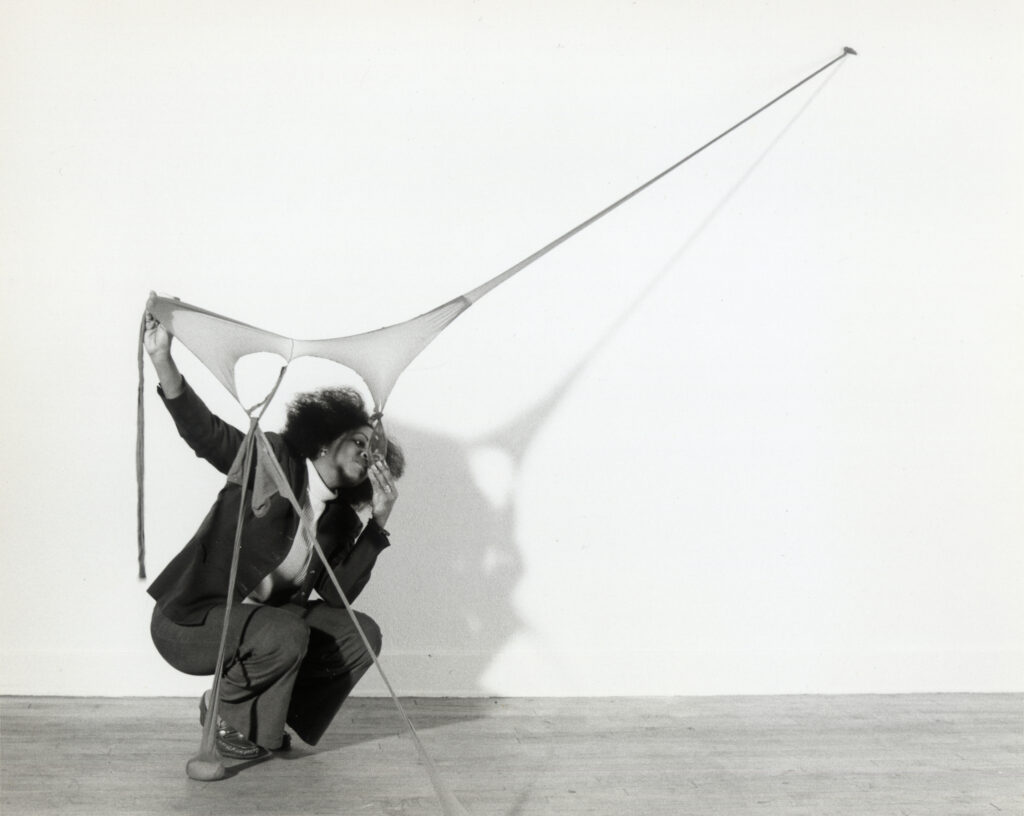
Nengudi’s most recognizable series of work is R.S.V.P., which she started in the mid-1970s. The R.S.V.P. Series, or Répondez s’il vous plaît (respond, please), demonstrated Nengudi’s experimentation with nylon pantyhose. Importantly, Nengudi began working in this medium after the birth of her first son, when she was especially interested in the elastic nature of a woman’s body. She recalls,
“So yes, the explorations were really exciting. I put eggs in them, I broke eggs in them…I used white glue, I used hot glue, which obviously didn’t last that long. I tried everything—resin. Again, it dissolved in the resin. So really, as I was developing the series, it was all about exploring the material…And it took a while to get to…the sand, where I just noticed that…once in the nylons, it had such sensuality to it, because it had this kind of natural body form from the weight of the sand.”
Given the experimental nature of her sand-filled nylon pieces, Nengudi explains, “I thought about them as sculpture first. I did not develop them thinking that I would perform in them.” But Nengudi eventually did embrace the performative potential of these sculptures, even engaging Hassinger to perform with them at the Pearl C. Woods Gallery in 1977 by entwining her body with the material, manipulating it, even dancing with it.
Nengudi has lived in Colorado since the 1980s, and continues to stimulate audiences by creating work that plays with the line between sculpture, installation, and performance in space. However, she has also made significant contributions as an arts educator, especially at University of Colorado at Colorado Springs, and as an advocate of the arts. Namely, she established a community art gallery called ARTSpace in Colorado Springs so that “artists could show their work” and learn “what it takes to have an art exhibit.” The added bonus, of course, was that “the community could come in and see the artwork. It was right there for them.” For someone whose early exposure to creative expression was so formative to her artistic practice, this is a logical next step to engage new generations of artists and viewers. It also connects with her decades-long entreaty to audiences: “respond, please.”
To learn more about Senga Nengudi’s life and work, check out her oral history interview! Find this interview and all our oral histories from the search feature on our home page. You can search by name, key word, and several other criteria.
New Book by Henrike Christiane Lange
In this book, Henrike Lange takes the reader on a tour through one of the most beloved and celebrated monuments in the world – Giotto’s Arena Chapel. Paying close attention to previously overlooked details, Lange offers an entirely new reading of the stunning frescoes in their spatial configuration. The author also asks fundamental questions that define the chapel’s place in Western art history. Why did Giotto choose an ancient Roman architectural frame for his vision of Salvation? What is the role of painted reliefs in the representation of personal integrity, passion, and the human struggle between pride and humility familiar from Dante’s Divine Comedy? How can a new interpretation regarding the influence of ancient reliefs and architecture inform the famous “Assisi controversy” and cast new light on the debate around Giotto’s authorship of the Saint Francis cycle?
Illustrated with almost 200 color plates, including individual images of each scene in the narrative cycle, this volume invites scholars and students to rediscover a key monument of art and architecture history and to see it with fresh eyes.
“Henrike Lange’s book on Giotto’s Arena Chapel changes our view of this key work of painting in Italy around 1300.” – Ulrich Pfisterer, Director of the Zentralinstitut für Kunstgeschichte; LMU, Munich
“Dr. Lange’s discovery is so all-encompassing and so to the point… It is now possible to bridge the Anglo-Saxon and Italian views of Giotto where once they were thought to be irreconcilable: a great step forward for the field.” – Laurence B. Kanter, Chief Curator, Yale University Art Gallery
“Lange shows how the theme of triumph is at once central and inexhaustible in the Arena Chapel – its structure, imagery, physical presence, context. The book is itself a vivid triumphal procession of ways of seeing, scholarship, discovery, and critical thinking.” – Randolph Starn, UC Berkeley History
“Lange’s discovery is completely new and original: an entirely convincing case built on the foundations of history, literature, philosophy, political iconography, and theology.” – Andrew Stewart, UC Berkeley History of Art and Classics
“Lange has the rare ability to build bridges for the reader with her command of European languages that allow her to translate and integrate the vast libraries of research on Giotto written in different linguistic and scholarly traditions. The very elegance and clarity of her writing suggest that Lange’s will be a contribution of real significance and will have quite an impact on medieval and Renaissance studies.” – Giuseppe Mazzotta, Sterling Professor of Italian, Yale University
“At its heart Lange’s impressive book relays an intensely visual argument. It is a scholarly triumph in itself to explicate the intimate relation – architectural, political, theological – between the Arena Chapel and a famous Roman prototype, the Arch of Titus. All scholars and students of the period will need to engage this powerful historical proposition and its implications for Italian Trecento visual culture. But Lange also finds the full measure of Giotto’s triumph as a painter.” – Whitney Davis, UC Berkeley History of Art
[from publisher’s site]
Henrike Christiane Lange is Associate Professor in History of Art and Italian Studies at the University of California, Berkeley. Lange completed her Magister Artium at Universität Hamburg, Germany, before earning her PhD at Yale University. The present book is the culmination of two decades of research at sites, archives, and collections across Europe.
Giotto’s Arena Chapel and the Triumph of Humility.
Cambridge: Cambridge University Press, 2023.
Oral History Release – Thomas Gaehtgens: Famed Art Historian and Director of the Getty Research Institute
“As a scholar, one’s career typically revolves around teaching, research, and scholarship. Once in a while, a scholar is lucky enough to have a hand in building something. I’d like to think I have helped build a thing or two in my career.”
Such were the words of renowned art historian Thomas Gaehtgens upon wrapping up his oral history at the Getty Research Institute (GRI) in the fall of 2017. That the words held an element of retirement was no coincidence. Gaehtgens had already enjoyed a long and successful academic career before assuming the directorship of the GRI in 2007, a position from which he would officially retire in the spring of 2018. True to form, Gaehtgens met retirement with the same productive stride that had underpinned his work throughout the previous five decades. Thus, after a fruitful delay, the Oral History Center and Getty Trust are pleased to announce the release of Thomas Gaehtgens: Fifty Years of Scholarship and Innovation in Art History, from the Free University in Berlin to the Getty Research Center.
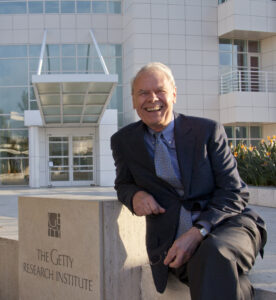
Getty Research Center
For many in the academic and art world of Europe, Gaehtgens needs no introduction. Born in Leipzig, Germany, he completed his PhD in art history at the University of Bonn in 1966, and over the next forty years held professorships at the University of Göttingen and the Free University of Berlin. He is the author of nearly forty publications on French and German art, covering a wide range of topics and artists from the eighteenth to the twentieth century.
Scholarship aside, Gaehtgens also made a mark through his globalist approach to art, fostering relationships that bridged the divides between universities and museums, as well as those between nations. He organized the first major exhibition of American eighteenth and nineteenth century paintings in Germany, expanded the art history curriculum in Berlin to include non-Western areas, and founded the German Center for Art History in Paris. These efforts made him a natural fit for president of the Comité International d’Histoire de l’Art (CIHA), where he advanced initiatives such as the translation of art history literature and broadening the field of art history through international conferences.
Gaehtgens brought this same spirit of inclusivity and innovation to the Getty Research Institute. In many respects, he helped usher the GRI into the twenty-first century by launching a number of programs that not only brought modern technology to the study of art, but also two principles close to Gaehtgens’ heart: international collaboration and equal access for all. The creation of the Getty Provenance Index proved a case in point. In partnership with a host of European institutions, the Index provided a one-stop, digital archive for researchers to trace the ownership of various art pieces over the centuries. Here, for the first time, the records of British, French, Dutch, German, Italian, and Spanish inventories stood at the fingertips of researchers. These same principles of technology, cooperation, and equitable access also underpinned the GRI’s creation of the Getty Research Portal, a free online platform providing access to an extensive collection of digitized art history texts, rare books, and related literature from around the world. Other important achievements of Gaehtgens’ directorship included the Getty Research Journal, a more internationally represented Getty Scholars program, and the Getty’s California-focused art exhibitions, Pacific Standard Time.
Thomas Gaehtgens retired from the Getty Research Institute in 2018, officially ending an art history career that spanned over fifty years. Fittingly, his decades of work have been recognized around the world. He holds honorary doctorates from London’s Courtauld Institute of Art and Paris-Sorbonne University. In 2009, he received the Grand Prix de la Francophonie by the Académie française, an honor bestowed by the Canadian Government to those who contribute to the development of the French language throughout the world. And in 2011, Gaehtgens was elected a fellow of the American Academy of Arts and Sciences. Such honors highlight the indelible mark he left on the global field of art history, one still seen today from the German Center for Art History in Paris to the now-famed digital programs of the Getty Research Institute. Indeed, Thomas Gaehtgens was not just an influential teacher and productive scholar, but also an innovative art historian who helped build a thing or two.
You can access the full oral history transcript of Thomas Gaehtgens here. See also other oral histories from the Getty Trust Oral History Project.
About the Oral History Center
The Oral History Center of The Bancroft Library has interviews on just about every topic imaginable. You can find the interview mentioned here and all our oral histories from the search feature on our home page. Search by name, keyword, and several other criteria. We preserve voices of people from all walks of life, with varying political perspectives, national origins, and ethnic backgrounds. We are committed to open access and our oral histories and interpretive materials are available online at no cost to scholars and the public.
Sign up for our monthly newsletter featuring think pieces, new releases, podcasts, Q&As, and everything oral history. Access the most recent articles from our home page or go straight to our blog home.
Merritt Price: Building the Design Department at the Getty
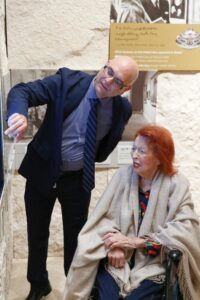
I’ve been interviewing for the J. Paul Getty Trust Oral History Project for several years, and it is a continual pleasure to learn about employees and operations across this large organization. But rarely do I come across a longtime employee whose work for the Getty Trust has taken them across departments, programs, and even physical sites. This is what made my interview with Merritt Price so unique. In fall 2020, I conducted a series of oral history interviews with Merritt Price, the former head of the Design Department (now Museum Design Department, 1995-2020).
Merritt Price is the former head of the Design Department (now Museum Design Department) at the J. Paul Getty Trust, which he ran from 1995-2020. Price grew up in Belleville, Ontario, Canada, and moved to Toronto in 1980 to attend the Ontario College of Art (now Ontario College of Art and Design). Price worked for several design firms in Toronto, including starting his own practice called Tangram, before accepting a position with the Art Gallery of Ontario in 1990. He began his work with the J. Paul Getty Trust in 1995, founding what was then the Exhibition Design Department.
Find this interview and all our oral histories from the search feature on our home page. You can search by name, key word, and several other criteria.
When Merritt Price joined the Getty in 1995, he needed to build the then-Exhibition Design Department from the ground up. This involved defining the Department’s work as not only about aesthetic concerns like text labels and display cases, but also about a larger visitor experience—where museum goers walk and sit, and how they interact with the space. As such, Price assembled a multidisciplinary team to create “one-stop shopping” for design at the Getty Trust.
In thinking about why it was important for the Getty to establish the Design Department, rather than rely on design consultants, Price explained,
“I think it’s also noteworthy that working in-house at a museum, as opposed to being in a consulting office that might be doing design for museums or galleries, that you have a different perspective, because you’re right in it and you’re in it all the time. It’s a little bit more laboratory-like where your work product is right there outside the door in the gallery. You can walk through it, you can see visitors using it.”
Over the twenty-five years he worked at the Getty, Price and his team handled designs for major projects in the organization’s history. Indeed, Price’s first task included design work for the Getty Center, which opened to the public in 1997. In addition to addressing gallery spaces, Price also created a wayfinding system with signposts to orient visitors on the large Getty Center campus. He later worked on the redesigns at the Getty Villa.
Price and his team also designed for exhibitions across the Getty Trust, including Devices of Wonder: From the World in a Box to Images on a Screen, Foundry to Finish: The Making of a Bronze Sculpture, and Michelangelo: Mind of the Master. However, Price was particularly involved in the exhibition J. Paul Getty Life and Legacy, for which he pitched the concept and led a team of curators in creating content. Listen as he explains the idea behind the show:
I have a background in museum work, and I felt confident speaking with Mr. Price about his vision for museum spaces and the practical necessities like spacing around pedestals. However, I still learned a great deal about technical innovations, as well as the impact of design both on exhibitions and on the other spaces in which visitors use—from trams to gift shops to restaurants. This interview was both personally enjoyable and is a great source of information about the construction and redesign of the Getty Center and the Getty Villa.
To learn more about Merritt Price’s life and work, read his oral history transcript here. Find this interview and all our oral histories from the search feature on our home page. You can search by name, key word, and several other criteria.
Charles Gaines: The Criticality and Aesthetics of the System
As a continuation of our work for the Getty Research Institute’s African American Art History Initiative, Dr. Bridget Cooks and I conducted a series of oral history interviews with the conceptual artist Charles Gaines. This interview was the first of several exploring the lives and work of Los Angeles-based artists, and celebrates Gaines’s extraordinary artistic contributions.
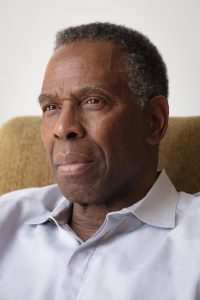
Charles Gaines is an artist specializing in conceptual art, as well as a professor of art at California Institute of the Arts. Gaines was born in South Carolina in 1944, but grew up in Newark, New Jersey. He attended Arts High School in Newark, graduated from Jersey City State College in 1966, and earned an MFA from the School of Art and Design at the Rochester Institute of Technology in 1967. Beginning in 1967, he taught at several colleges, including Mississippi Valley State College, Fresno State University, and California Institute of the Arts. Gaines has written several academic texts, including “Theater of Refusal: Black Art and Mainstream Criticism” in 1993 and “Reconsidering Metaphor/Metonymy: Art and the Suppression of Thought” in 2009. His influential artwork includes Manifesto Series, Numbers and Trees, and Sound Text; and he exhibited at the Venice Biennale in 2007 and 2015. Gaines is the recipient of several awards, including Guggenheim Fellowship in 2013 and REDCAT Award in 2018. Find this interview and all our oral histories from the search feature on our home page. You can search by name, key word, and several other criteria.
Hearing about Charles Gaines’s upbringing was especially helpful in framing his approaches to art. For example, he spoke about his mother’s influence on his life–particularly her musical inclinations. Though Gaines concentrated his early artistic studies on the visual arts, he also had a passion for music, eventually becoming a professional drummer. This connection to musicality and music theory features prominently in his conceptual works like Snake River and Manifestos. Indeed, in his Manifestos Series, Gaines turned the text of political manifestos into musical compositions based on a system he devised. He recalled, “Unconsciously, I began thinking about music as a kind of mathematics and this connection with text and language; I began to see the connection to language and systems.”
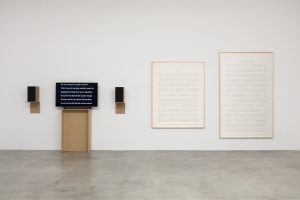
speakers, hanging speaker shelves. Photograph by Frederik Nilsen.
Further, Gaines shared about his exploration of conceptual work in the 1970s, and his consequential transition from an abstract painter to a conceptual artist:
Well as I said, those big abstraction paintings turned into these process-oriented works, and so that work demonstrated an interest in a systematic approach. It was a part of my research. I was looking for an alternate way of making work that was not based upon the creative imagination, was not based upon subjective expression.
This transition period also coincided with an eighteen-month sabbatical from teaching at Fresno State University from 1974 to 1975, when Gaines, his wife, and infant son moved to New York to explore his professional art practice. He recalled of the conceptual artists he met there:
But I did at that time, during that time in New York, become much more familiar with conceptualists, with what the conceptualists were doing. At that time, it provided a context for me. It was just before I started working with numbers but I was working with systems already, and so I felt that it’s true that, of anybody, my work, the language of my work fits best with those conceptualists.
Another major theme in Gaines’s interviews was his many years teaching art at colleges across the country, including the challenges of teaching at what he deemed conservative institutions. Despite these challenges, Gaines always looked for ways to mentor his students by not only helping them improve the quality of their work, but also by sharing his own insights into how to navigate the art world. He explained:
The thing I would always give my students advice about is that you can’t control career. That’s something that you shouldn’t even be thinking about. You should only think about the work, and you should also think about exhibiting the work, which I think is different from a career. You need to show people the work, so you make the work and try to get people to see it. In that process, something might happen, you can’t make it happen. In almost every story about how careers get kicked off, it’s because you happen to be at a right place at the right time, and somebody who matters notices something, and then things sort of roll into place…Ultimately, it’s the work that’s going to get you the exposure.
In addition to his own works and teaching career, Gaines has also made many important contributions to the art world through his theoretical writing and curation of exhibitions. In 1993, he co-curated Theater of Refusal: Black Art and Mainstream Criticism with Catherine Lord at the University of California, Irvine in 1993. This show, and Gaines’s catalog piece, explored racism in the art world by displaying Black artists’ work alongside reviews from (largely white) art critics, and questioned how and why they misread this work. Of this important exhibition, Gaines explained:
Well, I chose artists who were actively producing in the art world, and known to people. In a couple of cases, I showed a couple of people who were at an early part of their career, like Renée Green, for example, just started her career. But there were other people like Lorna Simpson and Fred Wilson, Adrian Piper, were completely well-known. The fact that they’re well-known artists was important to me because it allowed me to underscore this point that I was making: that is that there’s not much writing on the work of artists, even if they’re well known. The writing that there is [is] marginalized around the idea of race. The writers who wrote about [them] often thought they were writing positively about the work. They didn’t think that the way they approached the work was, in fact, marginalizing.
To learn more about Charles Gaines’s life and work, check out his oral history interview! Find this interview and all our oral histories from the search feature on our home page. You can search by name, key word, and several other criteria.
David C. Driskell: Life Among the Pines
In April 2019, Dr. Bridget Cooks and I had the privilege of conducting a series of oral history interviews with artist and educator David C. Driskell for the Getty Research Institute’s African American Art History Initiative. David and his wife, Thelma, welcomed us into their home, where we spent hours speaking with David about his singular life and extraordinary contributions to art and African American art history. It was a surreal experience to sit behind the camera and look around at beautiful works of art while David skillfully engaged us with stories from his life and work. In recounting his past, David employed accents and well-timed jokes that had us in stitches. It was a pleasure to watch a gifted storyteller at work.
One year later, I learned from Bridget that this kind, funny, and smart man had passed away from complications due to the coronavirus on April 1, 2020. In a year filled with so much loss and change, David’s passing still hit hard. With David’s passing, the world lost not only a bright personality, but also a brilliant mind who championed the field of African American art history. And despite the uncertainty of these early days of the pandemic, I am happy to say that the Oral History Center was able to expedite the finalization of David’s oral history transcript, which is now available to the public.
Now another April has arrived. At the Oral History Center our work remains remote, but people across the country have been vaccinated against the coronavirus, and there is hope that the end of the pandemic is in sight. It is past time to take stock and reflect on those we have lost and the stories that remain with us. For me, David Driskell’s interview is one such story with staying power.
David C. Driskell was an artist and professor of art. He was born in Georgia in 1931, but mainly grew up in North Carolina. Driskell graduated from Howard University with a degree in painting and art history in 1955, attended the Skowhegan School of Painting and Sculpture in 1953, and earned an MFA from Catholic University in 1962, as well as a study certificate in art history from Rijksbureau voor Kunsthistorische Documentatie in 1964. Beginning in 1955, he taught at several colleges, including Talladega College; Howard University; Fisk University; and the University of Maryland, College Park. His influential artwork includes Young Pines Growing, Behold Thy Son, Of Thee I Weep, and Ghetto Wall #2. Driskell has curated important shows highlighting African American art history, including Two Centuries of Black American Art and Hidden Heritage: Afro-American Art, 1800-1950. He also helped establish The David C. Driskell Center for the Study of Visual Arts and Culture of African Americans and the African Diaspora at the University of Maryland, College Park, in 2001. Find this interview and all our oral histories from the search feature on our home page. You can search by name, key word, and several other criteria.
Throughout his many years making art, David experimented with different media and subjects, often with the recurring theme of pine trees. Yet one of his most memorable pieces is Behold Thy Son from 1956, which is now at the Smithsonian’s National Museum of African American History and Culture. David painted this pietà – a subject in Christian art depicting the Virgin Mary cradling the dead body of Jesus – in response to the 1955 murder of Emmett Till. For many observers, this image captured the zeitgeist of the early Civil Rights movement.
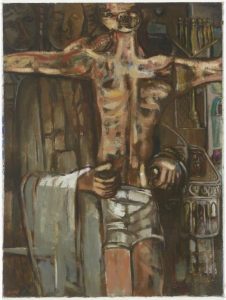
Listen as David speaks about making this important piece:
When Bridget asked how David felt about Behold Thy Son over sixty years after painting it, he replied, “I think it is dated and tied to a time and period, but the fight goes on. It’s also showing you that time hasn’t changed that much. [Eric Garner and] ‘I can’t breathe.’ ” Indeed, the subject of violence against Black bodies remains tragically evergreen.
And yet, in part because of this turmoil for African Americans at midcentury, David found renewed artistic inspiration in the serenity of nature – especially pine trees. Listen as he explains this shift in his work:
David was indeed a talented artist and important educator, as Bridget eulogized so well in her obituary on ArtForum last year. But our oral history interviews with him also highlighted the fact that he was a deeply religious man, one who connected his spirituality and creativity with his passion for gardening. During an interview session after church on Palm Sunday, David said of these links between nature and religion, “From dust and dirt thou came, and so dust to dirt thou goest. I’ve got to be part of that process.”
He further explained:
“So gardening is to me like painting, in a way. It’s a part of the process of this creative spirit that I feel so close to. Can’t wait to get [to the house in Maine] and I often go to the garden before I go to the studio…Gardening is a part of my life. It’s a part of that kind of spiritual regeneration that comes with the natural process. It isn’t for me so much the biblical reference.”
As a further measure of the man, when we were wrapping up our final interview session, we asked David for his concluding thoughts, and he said, “Well, maybe the final say is none of this I could be doing without family.” He went on to praise his wife, Thelma, in particular for supporting his art career when it was just a dream.
To learn more about David C. Driskell’s extraordinary life and work, read his oral history transcript and watch his interview in full here, here, and here. Find this interview and all our oral histories from the search feature on our home page. You can search by name, key word, and several other criteria.
Oral History Year in Review: Lessons I’ve Learned
In my years working as an oral historian, I’ve come to learn that the most important skill I have in my professional toolbelt is humility. Even after years of study and completing interview-specific research, I know that in any given oral history, I am never the expert in the room. In recording life histories with narrators, I always walk away with new information and fresh perspectives. Oral history folks call this “sharing authority,” but I also like to think about it as an opportunity for personal growth. And part of this growth requires jumping into new subjects and interview situations that challenge me.
One project that continues to challenge and delight me is the J. Paul Getty Trust Oral History Project. I have been working on this project since I joined the Oral History Center (OHC) in 2018, interviewing employees and trustees about the organization’s important contributions to the arts. Also in 2018, the partnership between the Getty Trust and the OHC expanded in order to document the history of prominent African American artists as part of the Getty Research Institute’s (GRI) African American Art History Initiative. Between the two subject areas, the Getty Trust Project represents most of the interviews I have conducted over the last year.
I love that the Getty Trust Project has prompted me to use my background in museums and art history, sometimes forcing me to literally dust off old textbooks. Even so, these interviews have taken me outside my personal art historical comfort zone of Renaissance Italy (I once took an entire course on the works of Michelangelo!), and introduced me to fields from medieval Flemish illuminated manuscripts to twentieth-century American video and performance art. This introduction to various art history specialities has required much study, but also humility in knowing when to defer to the expert.
In the case of the GRI’s African American Art History Initiative, I have had the pleasure to work with one such expert as a co-interviewer: art historian and University of California, Irvine professor Bridget R. Cooks. Cooks has been a delightful addition to the team and a wonderful resource about the artists we interview together. Her academic work in display and criticism added crucial framing to each artist’s story, and her interest in and respect for the people we interviewed shone through every oral history, creating positive experiences for all.
However, approaching these interviews with two interviewers has challenged me as an oral historian. Typically, it is the job of one interviewer to direct an oral history and help guide narrators through the discussion. I.e. Should I ask a follow-up question here or move on? How much time should we spend on this one topic? But working with two interviewers means I am not the sole person in control of the oral history, even when working off the same interview outline. At any given time, one interviewer might want to leave a topic, while another wants to ask more questions.
In order to alleviate some of this confusion, Cooks and I have had to not only build rapport with narrators, but also with each other. And after conducting several interviews together, we have worked out our own system of how to communicate during oral histories – non verbally or with sticky notes – and in how to collaborate in preparing interview outlines. For instance, before I approached a narrator for a pre-interview conversation, Cooks and I had conversations about why the individual was chosen to participate in the project, what themes we hoped to address in the oral history, and what resources I as the non-expert should consult. After completing the pre-interview with the narrator, I used that discussion to build out the interview outline, which I shared with Cooks. We used a Google Docs file to have a back-and-forth about interview structure, language to use, and even subjects to avoid or emphasize. As we decided Cooks should take the lead in these oral histories, this early collaboration was key to their success.
While working on the GRI’s African American Art History Initiative, I have also been challenged to better center the underrepresented voices in these oral histories. In a project that in part seeks to investigate race and power in the art world, this was especially important for me to get right. After all, I’m a white woman who works for an elite university – UC Berkeley – and such institutions have sometimes silenced the contributions of African Americans. In order to combat this historical power dynamic, I privileged extensive pre-interview conversations with narrators about what they wanted to discuss, including the potential to break from the way art historians, critics, or journalists have previously interpreted their lives or work. This is a meaningful practice for any oral history, but these interviews taught me to be acutely sensitive in helping individuals narrate their life stories in the ways that they prefer.
Navigating all these issues in interviews from both subject areas in the Getty Trust Project has challenged me to be a better and more flexible interviewer, and to appreciate the humility required along the way. I hope you enjoy learning from the interviews in this project as much as I have!
Here some finalized Getty Trust interviews I have conducted over the last year:
Here are some other Getty Trust interviews I have conducted that you can to look forward to in the coming months:
David Driskell
Charles Gaines
Thomas Kren
Joyce Hill Stoner
Other non-Getty interviews I’ve conducted in the past year:
Mary Hughes- Bay Area Women in Politics
Zachary Wasserman- Law and Jurisprudence Individual Interviews
Howardena Pindell: Artist, Teacher, and Social Observer
Howardena Pindell is a painter and mixed media artist, as well as a professor at State University of New York at Stony Brook. She earned a BFA from Boston University in 1965 and an MFA from Yale University in 1967. Pindell worked at the Museum of Modern Art from 1967 to 1979, where she held several positions, including exhibit assistant, curatorial assistant, and associate curator. She cofounded the A.I.R. Gallery in 1972. Pindell has taught in the Department of Art at State University of New York at Stony Brook since 1979.
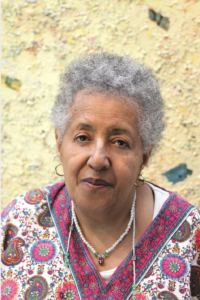
Pindell’s interview is the first in a series of oral histories with prominent African American artists for the Getty Research Institute’s (GRI) African American Art History Initiative. These oral histories complement the GRI’s ongoing work to collect, preserve, and interpret the art and legacies of these artists.
Pindell was born in 1943 and grew up in segregated Philadelphia. Thanks to the support of her parents and her demonstrable talent, Pindell had a great deal of exposure to art early in life. She went on to study at Boston University and Yale University, then moved to New York in the 1960s. In New York Pindell began working at the Museum of Modern Art while also continuing to paint. She recalled, “…I was working five days a week, and I was used to having natural light, and I didn’t have natural light.” As natural light is so important to a painter, and her work schedule cut into daylight hours, Pindell started experimenting with mixed media in these years – a practice she has continued to expand.
Perhaps Pindell’s best-known work is Free, White and 21, a video performance piece from 1980 that is a commentary on her experiences with racism and sexism. Listen to Pindell recount the logistics of creating the piece.
Free, White and 21 also relates to many of Pindell’s ongoing challenges with racism in the women’s movement and the art world at large. Though she was a cofounder of A.I.R. Gallery in 1972 – the first artist-run gallery for women in the United States – as an African American woman, she often felt marginalized in discussions about how to expand opportunities for women artists.
Pindell also spoke at length about her work as a professor of art, and her approach to teaching. Having been academically trained, she worked with many different professors and knew what teaching styles she would and would not emulate. Further, she saw working with students as important to her practice as a working artist. Pindell explained, “I think teaching helps me a lot, just so it keeps me fresh, because I can help the younger students – and in some cases, older students – with their work with formal issues. That keeps me informed about how I should think about my work, as well.”
Pindell’s story highlights the challenges of being a working artist, the importance of teaching others, fighting racism and sexism in the art world and beyond, as well as the long-overdue recognition of African American artists.
To learn more about Howardena Pindell’s life and work, check out her oral history!
Two New Titles from Professor Sugata Ray
Two new books are available from History of Art Professor Sugata Ray.
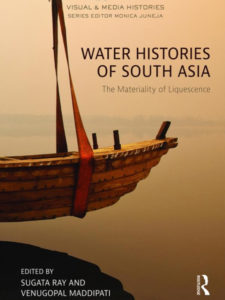
Water Histories of South Asia: The Materiality of Liquescence
Edited by Sugata Ray, Venugopal Maddipati
From the Routledge website:
“This book surveys the intersections between water systems and the phenomenology of visual cultures in early modern, colonial and contemporary South Asia. Bringing together contributions by eminent artists, architects, curators and scholars who explore the connections between the environmental and the cultural, the volume situates water in an expansive relational domain. It covers disciplines as diverse as literary studies, environmental humanities, sustainable design, urban planning and media studies. The chapters explore the ways in which material cultures of water generate technological and aesthetic acts of envisioning geographies, and make an intervention within political, social and cultural discourses. A critical interjection in the sociologies of water in the subcontinent, the book brings art history into conversation with current debates on climate change by examining water’s artistic, architectural, engineering, religious, scientific and environmental facets from the 16th century to the present.
This is one of the first books on South Asia’s art, architecture and visual history to interweave the ecological with the aesthetic under the emerging field of eco art history. The volume will be of interest to scholars and general readers of art history, Islamic studies, South Asian studies, urban studies, architecture, geography, history and environmental studies. It will also appeal to activists, curators, art critics and those interested in water management.”
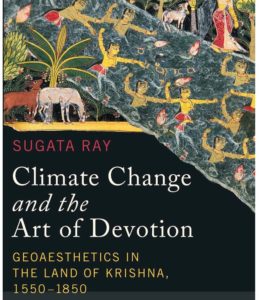
Climate Change and the Art of Devotion: Geoaesthetics in the Land of Krishna, 1550-1850
By Sugata Ray
From the University of Washington Press website:
“In the enchanted world of Braj, the primary pilgrimage center in north India for worshippers of Krishna, each stone, river, and tree is considered sacred. In Climate Change and the Art of Devotion, Sugata Ray shows how this place-centered theology emerged in the wake of the Little Ice Age (ca. 1550–1850), an epoch marked by climatic catastrophes across the globe. Using the frame of geoaesthetics, he compares early modern conceptions of the environment and current assumptions about nature and culture.
A groundbreaking contribution to the emerging field of eco–art history, the book examines architecture, paintings, photography, and prints created in Braj alongside theological treatises and devotional poetry to foreground seepages between the natural ecosystem and cultural production. The paintings of deified rivers, temples that emulate fragrant groves, and talismanic bleeding rocks that Ray discusses will captivate readers interested in environmental humanities and South Asian art history.”
![Giotto's Arena Chapel and the Triumph of Humility [book cover]](https://update.lib.berkeley.edu/wp-content/uploads/2023/01/giotto.jpg)